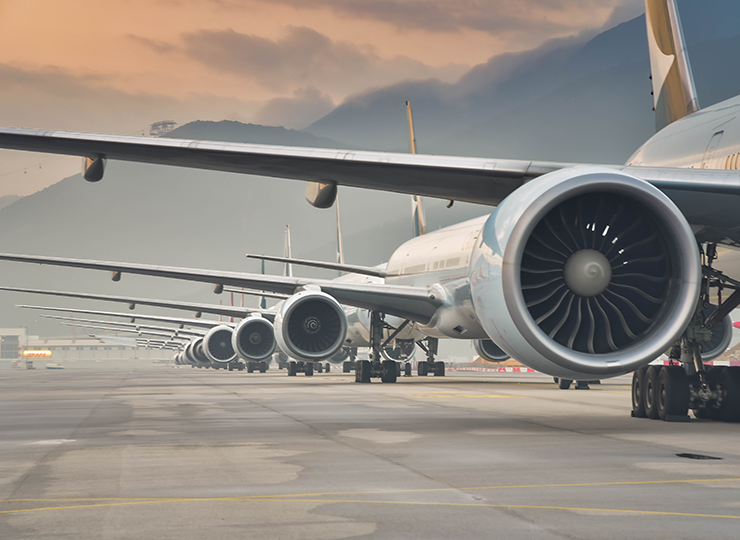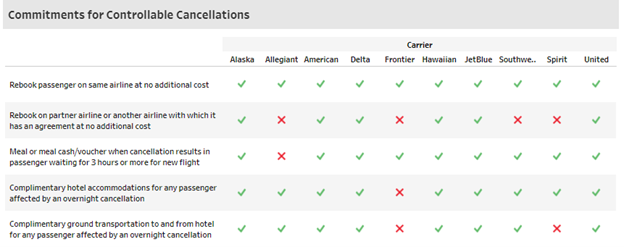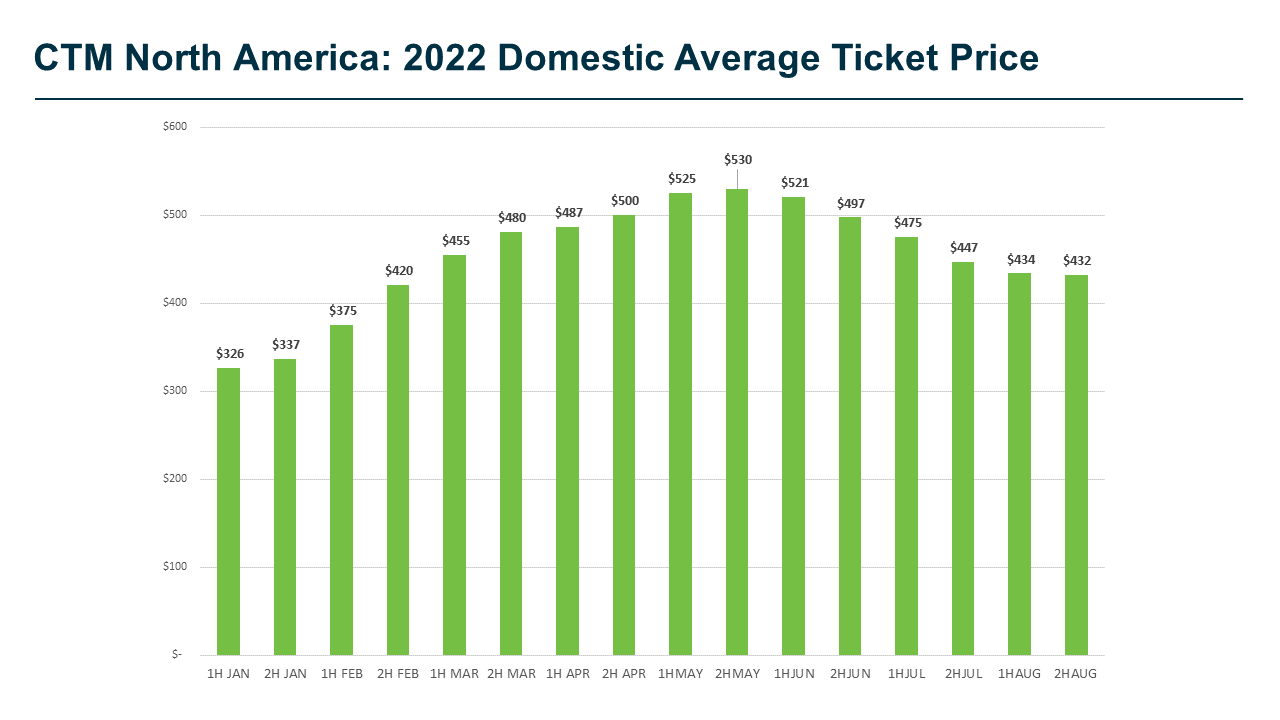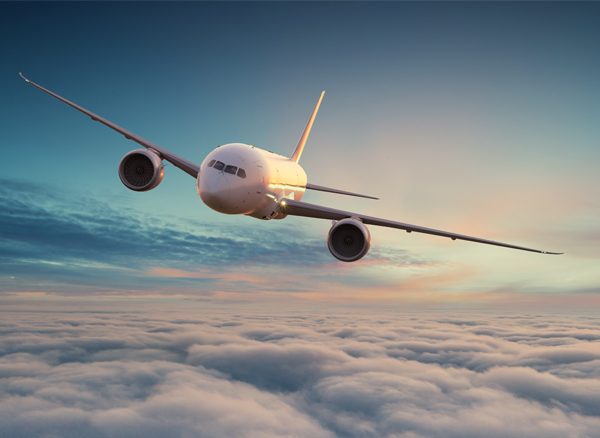

Air travel reliability increasing this fall
Call it the comeback from this summer’s “travel armageddon” – air travel reliability is looking up this fall, with service and reliability trending upward and the potential for cancellations and delays on the way down.
In this blog, we review the summer’s travel data and how, as the leaves change, airlines will be changing their service too to mitigate the impact of ongoing shortages for continued reliability. Plus, we’ll suggest some practical tips for traveling this fall and winter and reveal inventive improvements from airlines coming in 2023.
Cruel summer – airlines take a beating
If you spent time in the air this summer, you likely experienced the impact of an industry-wide flight shortage and challenging market conditions. From pilot shortages to increased demand, the return of business travel to cancellations and delays – all these elements came together to form the “perfect storm” of this summer’s air travel armageddon.
While we can’t dismiss the impact of demand and pilot shortage, it’s important to put this summer’s experience into context. “We had one and a half years during COVID where airline performance numbers, like on-time arrival and departures, were essentially 100%,” says Erik Shor, Corporate Travel Management’s (CTM’s) chief partnership officer and head of CTM’s Partner Solutions Group, which works directly with airlines and other travel providers.
“This is because only a fraction of the usual number of flights were running,” Shor continues. “When travel ramped back up in the summer, these numbers dropped dramatically from the ‘perfect score’ airlines achieved during COVID with limited flights.”
In general, CTM expert Shor point to performance numbers* from this summer that might show a more encouraging view of the overall impact, such as:
- An average of 82% of flights this summer arrived within 15 minutes of schedule
- Only 1% of flights were canceled overall
- The remaining 17% of flights had delays of 15 minutes or more
*Data via airline self-reporting: Delta, Alaska, Southwest, and FlightAware US Domestic and International Delays and Cancellations Report

“In a typical summer travel season, the average daily delay system-wide in the US is about 18%, and this summer clocked in at 22% or 20% above the norm and about 25% more delays overall,” explains Shor. “While delays were more frequent, cancellations were not.”
Fall is in the air - what's next?
As summer turns to fall, airlines are acting proactively to adjust schedules to improve reliability and match the decrease in leisure demand that typically accompanies the fall season. “All the major airlines have decreased their capacity by approximately 10%,” says Shor. “United, American, and Delta have all posted schedule changes through November.” So far, this accounts for 52,000+ flights cut during the fall season. “Major carriers have also committed to flying no more than 90% of 2019 capacity for the rest of 2022,” Shor says.
What’s different about these fall and winter schedule cuts versus this summer? Fall cancellations are planned. “These canceled flights are being removed from the schedule months ahead of time, instead of on the fly,” he says. “The airlines are thinking this through and being more methodical to avoid the chaos of the summer and limit disruption.”
In one example, American Airlines is loading schedule adjustments approximately 100 days in advance, which is in line with pre-pandemic 2019 schedule adjustments. It’s typical for airlines to make schedule changes about 60 to 90 days ahead of time.
Airlines are also using the fall “shoulder season” to re-hire staff. CTM experts cite two examples:
- In an average pre-pandemic year, United would hire 1,000 new pilots – this year, they are on track to hire 3,000 new pilots
- Over the course of the pandemic, Delta lost 20,000 employees but has already hired them all back and then some – on the road to becoming a larger workforce than they were pre-pandemic
“Airlines should be praised for being proactive here,” Shor says. “They are turning away revenue to make schedules work. The demand is there – but they want it to work smoothly. A working, reliable system is more important than the short-term revenue hits that the airlines will take.” The ultimate goal? Improving the passenger experience and boosting confidence in taking to the skies again.
Additionally, transparency in airline policies when cancellations and delays do occur has become the rule, in part because of the introduction of the Department of Transportation’s Aviation Consumer Protection website. According to the Airline Customer Service Dashboard, nine of 10 major US airlines will commit to rebooking a passenger for free if a flight is canceled due to something within the airline’s control. Five will now rebook travelers on another airline for free if they cannot accommodate them. Eight will offer free hotel accommodations if the new flight requires passengers to stay overnight.

A snapshot of the Department of Transportation’s dashboard
The data we have so far for this fall shows that the airline’s efforts in re-hiring and scheduled cutbacks are working as intended, CTM’s experts say. US airports are reporting 98% – 99% completion factors,* meaning that flight cancellations are very low. “Outside of occasional weather issues, which you can’t control, we see numbers improving across the board,” says Shor.

Mitigating the impact – staff shortages in the air and on the ground
While airlines are cutting schedules and hiring more crew to shore up for fall and winter, several factors may make things more difficult this season.
For example, air carriers are working to compensate for continued staff and crew shortages. Schedule cuts in the fall also give the airlines time to staff up again, and more time to bring on pilots who are fully trained on new types of aircraft and equipment. “Many airlines are retiring full families of aircraft,” says Shor. “For example, Delta has retired its 777s, MD-80s, and MD-90s as of 2020. Scaling back flights allows the airlines time to retrain pilots on newer equipment.”
Additionally, airlines are contending with staff shortages, including TSA agents and air traffic controllers.
TSA’s agent shortage is linked to staff pay, CTM experts say. TSA’s fiscal year 2023 budget request includes funding for a “pay equity plan” that would provide an average 30% increase in base pay for transportation security officers. If the budget request passes, TSA staffing issues may lessen over the fall. “It may not fix the short-term fall issues, but looking towards 2023, we think TSA staffing may be back to normal,” says Shor.
With the pay equity plan in play, TSA positions will be much more attractive, and our experts believe TSA will return to full capacity and be open at all airports, which has been an issue over the summer. Additionally, as leisure travel decreases and corporate travel increases, TSA efficiency improves. “Corporate travelers can get through security more quickly than the average leisure travel,” says Shor. “Ultimately, this balances the leisure and corporate mix and makes the whole airport more efficient, from the security lines to the parking lots.”

Air traffic control shortages are also of concern, although the Federal Aviation Administration (FAA) itself is confident that the worst of the air traffic control delays are likely in the past. “It takes anywhere between 2-4 years of college-level training to get someone into an air traffic control position,” says Shor. “The pandemic has made it difficult to get new workers in, and the workforce is on the older side. Without a deep bench to pull from, the impact is on the entire air network.”
Mitigating the impact – pricing
It’s important to note that, while schedule cuts will improve reliability and performance, they will also impact pricing. “Capacity constraints and cuts are setting a price ‘floor,’” says Shor. “This is ensuring that fares remain higher than pre-pandemic levels.”
CTM’s North American data shows US domestic fares coming down from peak highs in the latter half of May, with a pricing floor in August. “Capacity cutbacks with growing demand might drive prices up a bit,” says Shor. “For 2023, we will likely see periods of high fares, similar to 2022, when demand peaks.”

Data via CTM North America
'Tis the season – practical tips for fall/winter travel
While efforts by the airlines and the air transportation system as a whole will mitigate many of the issues we saw this summer, our experts still have a few practical tips in mind for traveling this season:
- Book early for the best fares. For cheaper tickets for Thanksgiving and beyond, book at least before Halloween.
- Thunderstorm season is realistically March – October, and snow season is the rest of the time. Thunderstorm season is no longer just in summer. Be prepared for weather during these months and for snow in the months you don’t see thunderstorms. Severe thunderstorms tend to be the worst offender for weather delays.
- Stay away from the last flight of the day. Delays tend to roll through the system and snowball from earlier to later in the day. The later in the day you fly, the more chance you have for delays.
- The busiest days of the week are Monday and Friday. Friday afternoons and Monday mornings are popular with both business and leisure travelers, so be prepared for more volume at the airport. Leave yourself a bit more time or if you have flexibility in your schedule, consider moving your Monday morning flight to Monday afternoon, for example.
- Use remote work to your benefit. “In a world where you can work virtually, go to mom and dad’s three or four days early for a working holiday break,” Shor says. “You’ll find cheaper fares and a lot less headache.” (P.S. – CTM customers can use CTM’s Fare Forecaster to find the cheapest time to travel across a 21-day period within a single search).
- Have your travel management company and airline’s mobile apps on your phone, and sign up for notifications from both. CTM offers the CTM Mobile app for updates and will push essential notifications to your phone. Airlines typically will make changes behind the scenes before you even arrive at the customer service desk, and in many cases, you will be automatically re-booked.
- Status helps. It helps to have airline loyalty/frequent flyer status. Depending on the level of status, you may receive a dedicated phone service number or ways to “skip the line” when call wait times are busy during high call volumes for airlines. Flyers with airline status may also get priority during irregular operations (e.g., first priority when it comes to rebooking).
- Review performance stats. Flyers can check their flight’s minute-by-minute status via FlightAware or by googling their airline and flight number, like in this example.

Springing forward – 2023 change and innovations
As airlines hire and train pilots, staffing issues ease, and schedule cutbacks allow for a manageable fall season, our experts point to the 2022 holidays and into 2023 as a turning point.
“We expect that airlines will be able to get back to full capacity and then some by spring 2023,” says Shor. “By spring break, we expect to see more ‘normal’ reliability numbers.”
Improvements in the airlines’ products in 2023 will also introduce positive change. “There’s a big initiative to order more aircraft right now,” Shor says. “For example, United is receiving on average two new aircraft per week.” Older products like small jets are being replaced with more fuel-efficient, larger, and more comfortable aircraft. These improvements will be part of a 2-5 year “fleet rejuvenation push from the airlines,” Shor says. “New aircraft will be 20 – 30% more fuel efficient.”

Specifically, the “50-seater aircraft” will be “a thing of the past,” Shor says. “All airlines are pushing to get out of that market and up-gauging across the board. Delta, United, and American are all bringing on new aircraft, and Delta has committed to eliminating the 50-seater in 2023 or 2024.”
One product enhancement we know business travelers will like is improved overhead compartment storage. “One of the big focuses from the airlines is to make sure they have enough overhead compartment storage for everyone onboard,” says Shor. “Aircraft are being retrofitted with deeper overhead compartments.”
Expect that older, smaller overheads are being retrofitted this way, and new aircraft will come with expanded overhead space, our experts say. “It’s an efficiency booster like no other,” says Shor.
Our expert’s final take as we look to the future? “We’ll get back to a new normal and a better place than before,” says Shor. “The tactics being employed now will work, and long-term projections are looking positive.”
Find out more about air travel reliability with CTM’s expert service.
Talk to CTM today.




